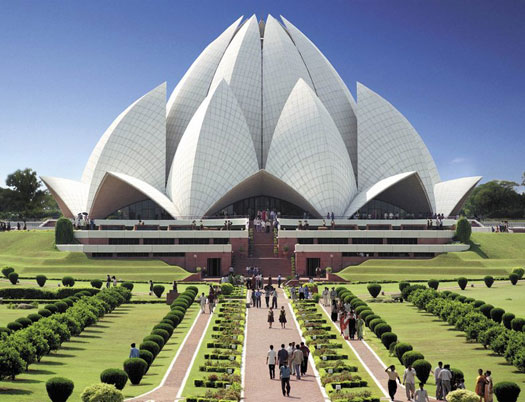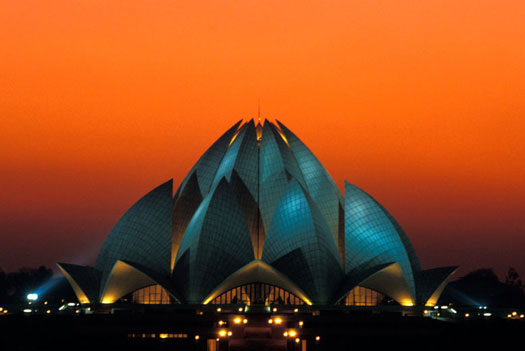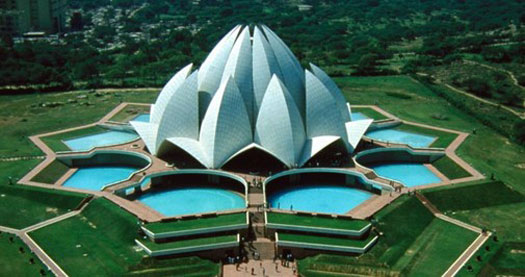In Indian culture, the lotus flower carries deep significance on a symbolic level. Mentioned in Hindu scriptures and sacred to the Gods, indelible images of Brahma and Buddha seated on a lotus can be found everywhere. For centuries, the lotus has influenced Indian architecture; one only needs to glimpse at the Taj Mahal to realize its dome resembles an upside-closed lotus. As far as modern constructions go, perhaps it’s New Delhi’s Lotus Temple, an architectural work of the Bahai faith, which best embodies both the beauty and significance of the lotus flower.
Located in the Kalkaji district of the vibrant capital city, Lotus Temple is one that provides an immaculate environment conducive to deep meditation. All who desire to visit the temple are allowed to enter, regardless of their own personal religious and spiritual beliefs. Completed in 1986, Lotus Temple is beautifully constructed from marble, cement, dolomite and sand. Persian architect Fariborz Sahba designed the temple with the intent of not only giving it a lotus shape, but also creating a symbolic structure for the people of India that embodies peace, purity and love. The temple complex features a main house of worship, reception center, library block, administrative building, restroom block and a basement to house electrical and plumbing components. However, the most striking and unique features of the temple are its 27 freestanding “petals” carved from marble. Built in layers, the outermost nine petals open outwards and form the nine entrances to the building; another set of nine petals point inwards and cover the entrance hall; the last set of nine petals, appearing partly closed, rise above the others, forming the main structure of the building. Much of the marble was quarried from the Mount Pentilekon mines in Greece, then shipped to Italy where it could be precision cut to meet the demands of the temple’s design. The design of Lotus Temple is so complex that it took nearly three years to complete a workable blueprint. The difficult task of constructing such a challenging design took nearly 10 years, 800 engineers, technicians and artisans, and is now realized to be one of the most complex edifices in the entire world.
Lotus Temple, standing over 130 feet high with a capacity to accommodate 2,500 people, also features incredibly well designed grounds; surrounded by nine ponds, from a distance the temple appears to be floating like a lotus flower on the water. With a staggering 50 million visitors since its inception, Lotus Temple is one of the most visited buildings in the entire world.




